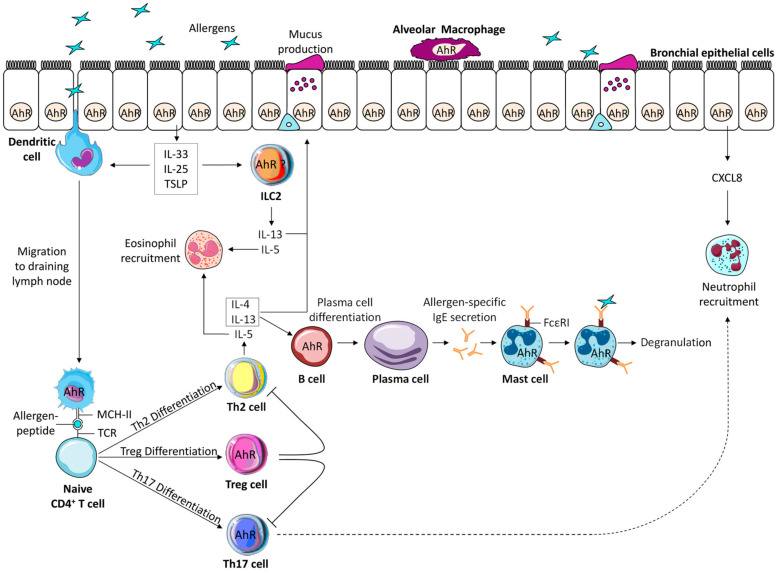Figure 2.
Aryl hydrocarbon receptor (AhR) expression in the different cells involved in the pathophysiology of asthma. The asymptomatic sensitization phase involves allergen presentation by antigen presenting cells to naive T cells leading to Th2 differentiation, production of interleukin (IL)-4 and IL-13 that activates B cells to differentiate into plasma cells producing allergen-specific IgE that bind to high affinity IgE receptors expressed by mast cells. Among these cells, macrophages, dendritic cells, and B cells express AhR. The effector phase of the asthmatic reaction following a second allergen contact, involves IgE dependent immediate release of mast cell mediators leading to bronchial smooth muscle cell contraction, activation of epithelial cells that release the pro-type 2 cytokines IL-33, Thymic Stromal Lymphopoietin (TSLP), IL-25, activation of innate lymphoid cells type 2 (ILC2) and Th2 cells and eosinophil recruitment. In some forms of asthma, Th17 cells are also activated leading to the recruitment of neutrophils, which are also attracted by the release of CXCL8 by epithelial cells. Epithelial cells, mast cells, Th17 cells and potentially ILC2 express AhR. Finally, an important negative regulator of the allergic reaction is represented by Treg that also express AhR. The co-activation of all these cells by AhR ligands can modify the outcome of the asthmatic reaction (see text for details).

